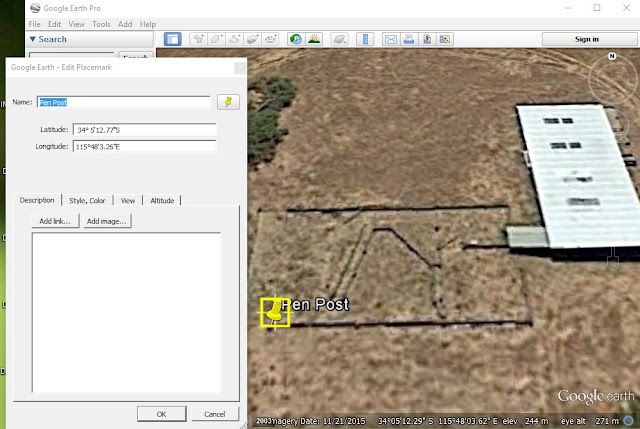 |
| Photo positions during a drone mission mapping a drainage ditch |
Overview
- Goal: Using a drone and aerial photogrammetry to demonstrate how a drainage channel can be surveyed quickly and efficiently for monitoring
- Tech: Walkera Tali H500 hexacopter drone, Gitup Git2, Tower app, Drone Deploy.
- Conditions: Light winds, cloudy, cool
- Outcome: Multicopter drones are a very effective way of surveying, monitoring and recording, in both 2D and 3D the current state of the drain.
Monitoring utility assets such as a storm water runoff drainage channel is time consuming and expensive. You either have to use satellite (or manned aircraft) imagery which suffers from low resolution and 'timeliness' or you have to send a ground team to walk the full length of the asset and make notes.
In theory, with drone imagery and a service such as Drone Deploy, a one man team can be sent to the field to fly and survey the asset at low altitude. This not only yields a current/up-to-date map in high resolution it has the capability to deliver a 3D model as well.
So I thought I'd put it to the test and headed out during a lunch break with my trusty Tali H500 hexacopter with Gitup Git2 action camera to see how well a drone could produce imagery and then create both a 2D and 3D maps in Drone Deploy.
If you can see the map above, click this link to view in new window; View map here.
You can also view a 3D model of the drain below. Click on the viewer, give it a moment to load and then enjoy moving around a virtual 3D model.
The imagery can also be exported from Drone Deploy to other 'more capable' GIS software packages. From there, and with multiple flights over any given period of time, more sophisticated monitoring can be applied.
This has been another 'drone adventure' in aerial surveying, inspection and mapping by The Aero Scout.
































